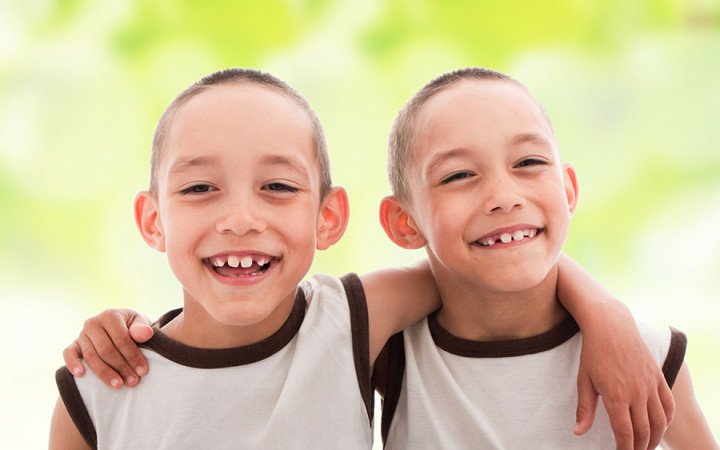Today’s Wonder of the Day was inspired by Alessa. Alessa Wonders, “Why do twins look alike?” Thanks for WONDERing with us, Alessa!
We were walking through the Wonderopolis field the other day when we overheard an interesting conversation between a cow and a couple of sheep:
Cow: Hey there, little sheep! I'm Buttercup. What's your name?
Sheep 1: I'm Dolly. Nice to meet you, Buttercup! This is my sister Polly.
Sheep 2: Hi Buttercup!
Cow: Hi Polly — wait a second! You look just like Dolly! What's going on here? Are you one of those cloned sheep?
Sheep 2: No, silly! We're twins!
Cow: Twins? Well, I never…
Sheep 1: That's right! Even our parents can't tell us apart!
We heard a disturbance over by the chicken coop, so we didn't get to hear the rest of their conversation. Dolly and Polly did make us start WONDERing, though. Exactly why do twins look alike?
If you've ever seen a pair of identical twins, then you know that they usually look…well…identical! That's because identical twins result from one fertilized egg splitting into two during pregnancy. When they're born, identical twins share the same DNA, which explains why they usually look almost exactly alike.
Identical twins aren't the only type of twins, however. Fraternal twins occur when two separate eggs are fertilized during pregnancy. Fraternal twins do not share the exact same DNA. In fact, they share only about half the same genes.
This is why fraternal twins often don't look any more alike than regular brothers and sisters. Unlike identical twins, fraternal twins can consist of both a boy and a girl born at the same time.
Although identical twins share the same DNA, you may have noticed that there are sometimes differences between identical twins, especially as they grow older. Scientists note that, after an egg divides in two, cells continue to divide as a natural part of the process of development of a baby with trillions of cells.
Each time a cell divides, the DNA has to be copied. Over the course of millions and millions of cell divisions, mistakes can occur, leading to mutations in the DNA. As a result, even identical twins don't necessarily have the exact same DNA by the time they're born.
DNA is incredibly large and complex. Mutations that occur are statistically unlikely to affect the small section of DNA that pertains to one's appearance. Thus, identical twins do usually look identical. To the extent that mutations do occur in the genes dealing with appearance, differences between twins can be seen.
Differences can become even more apparent over time. These differences that vary with age don't necessarily have anything to do with DNA. Instead, they're likely the result of environmental differences.
As twins grow up, they will not do everything identically. Differences in eating habits, exercise, and sleep can lead to differences in appearance, as well as overall health.
If it seems like you've seen more twins and triplets in recent years, you're not seeing things. Multiple births have been on the rise for a few decades now. Scientists believe new fertility drugs, which help women conceive, often increase the likelihood of multiple births.





